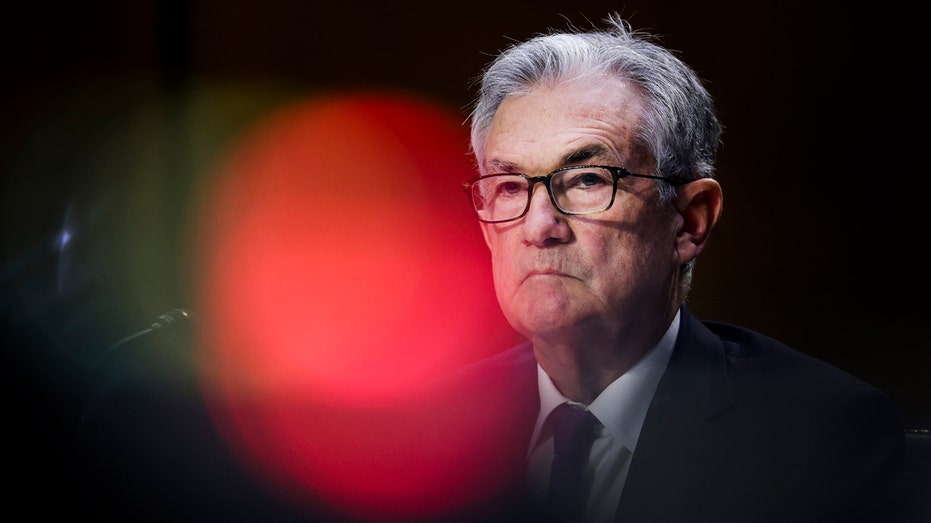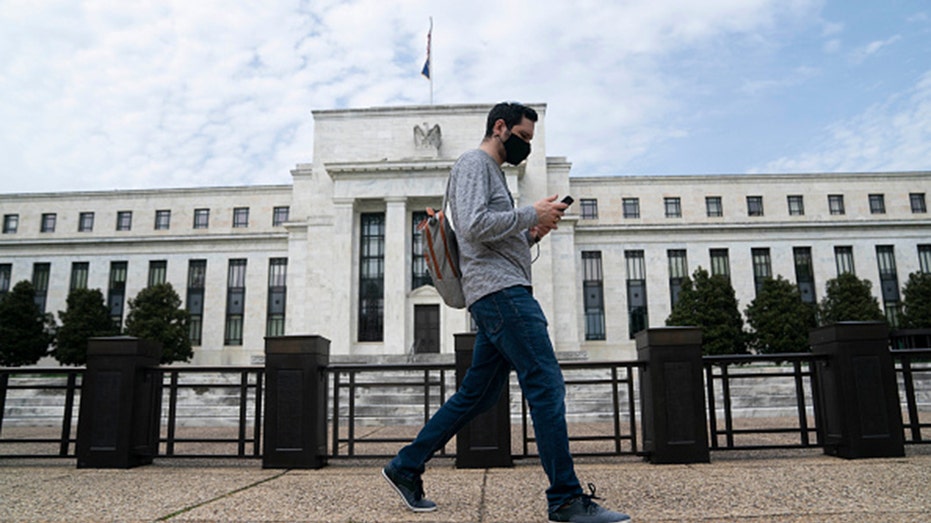Fed poised to start unwinding pandemic-era policy with inflation at 30-year high
Economists watching Fed closely for signs of earlier-than-expected rate liftoff
Recent Fed activities ‘risk looking quite illogical’: Former Federal Reserve nominee
Former Federal Reserve nominee and senior fellow at the Independent Institute Judy Shelton and Kingsview Wealth Management CIO Scott Martin provide insight into the Fed, the gold standard and investing.
Federal Reserve officials on Wednesday are expected to lay out plans to begin slowing their aggressive bond-buying program as soon as this month, the first step that policymakers will take in dialing back pandemic-era support for the U.S. economy.
Fed Chairman Jerome Powell and other top policymakers have indicated over the course of the past month that they are preparing to start reducing the $120 billion in monthly purchases, a policy known as "quantitative easing" that's designed to keep credit cheap. Reducing bond purchases will be the first step the Fed takes in returning to a more normal policy setting.

Federal Reserve Chairman Jerome Powell testifies during a Senate Banking, Housing and Urban Affairs Committee hearing on the CARES Act, at the Hart Senate Office Building on Sept. 28, 2021 in Washington, D.C. The hearing examined the effects and resu (Photo by Kevin Dietsch/Getty Images / Getty Images)
"I do think it’s time to taper, and I don’t think it’s time to raise rates," Fed Chairman Jerome Powell said in October during a virtual discussion.
BIDEN PITCHES REVAMPED MILLIONAIRES TAX, GLOBAL MINIMUM TO FUND SPENDING BILL
Minutes from the central bank's Sept. 21-22 meeting revealed that most policymakers agreed they could begin tapering asset purchases as soon as mid-November, with plans to conclude the reduction by July – about one or two months earlier than previously expected. That would mean the Fed would reduce assets by about $15 billion per month.
"Participants generally assessed that, provided that the economic recovery remained broadly on track, a gradual tapering process that concluded around the middle of next year would likely be appropriate," the minutes, released Wednesday, said. "Participants noted that if a decision to begin tapering purchases occurred at the next meeting, the process of tapering could commence with the monthly purchase calendars beginning in either mid-November or mid-December."
Although tapering is widely expected, economists will be closely watching for Powell and the Fed for signs of a sooner-than-expected interest rate lift-off as the U.S. copes with the highest inflation spike in 30 years.
For months, the U.S. central bank has been grappling with how to manage the exit from the ultra-easy monetary policies put in place in March 2020 without triggering a market selloff. Growing inflation risks have put added pressure on the central bank to begin unwinding support in an attempt to take pressure off of rapidly rising prices. (In September, the Federal Reserve's favored inflation gauge hit 4.4%, a 30-year high that's well above the U.S. central bank's preferred target of 2%.)

A man wearing a mask walks past the Federal Reserve building in Washington D.C., on April 29, 2020. (Photo by Liu Jie/Xinhua via Getty)
Though Powell has largely downplayed concerns about the surge in prices and rising inflation – which he's mostly attributed to supply chain bottlenecks, pent-up consumer demand and a flush of stimulus cash – the Fed head has changed his tone recently, suggesting that he's grown more concerned about the matter.
"Supply-side constraints have gotten worse," Powell said in October. "The risks are clearly now to longer and more-persistent bottlenecks, and thus to higher inflation."
Powell said the central bank would watch carefully for signs that households and businesses were expecting prices to continue climbing and promised the Fed will "make sure that our policy is positioned for a range of possible outcomes."
But experts say tapering may not be enough to counter the surging inflation the U.S. and the world have experienced over the past six months – meaning the Fed may be forced to raise rock-bottom interest rates early next year.

A pedestrian holds shopping bags in San Francisco, California, U.S., on Thursday, Sept. 16, 2021. Prices paid by U.S. consumers rose in August by less than forecast, snapping a string of hefty gains and suggesting that some of the upward pressure on ( David Paul Morris/Bloomberg via Getty Images / Getty Images)
"The market expects the Fed to start raising interest rates in July 2022, but the Federal Reserve may need to announce its first rate hike earlier in 2022 in order to help slow the rapid pace of inflation," said Danielle DiMartino Booth, CEO and chief strategist of Quill Intelligence.
Economic projections from the Fed's September meeting show that headline inflation expectations for this year are 3.7% – almost a full point higher than the May forecast, when Fed officials projected it would hit 3%.
GET FOX BUSINESS ON THE GO BY CLICKING HERE
"Most participants saw inflation risks as weighted to the upside because of concerns that supply disruptions and labor shortages might last longer and might have larger or more persistent effects on prices and wages than they currently assumed," the minutes stated.
The Fed will release its newest policy statement at the conclusion of its two-day meeting today at 2 p.m. ET, which will be followed by a Powell press conference.

